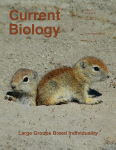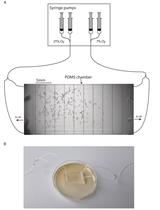- EN - English
- CN - 中文
Chemotaxis and Jumping Assays in Nematodes
线虫趋化性和跳跃运动试验
发布: 2015年09月20日第5卷第18期 DOI: 10.21769/BioProtoc.1587 浏览次数: 11911
评审: Fanglian HePeichuan ZhangAnonymous reviewer(s)
Abstract
Nematodes have sensitive olfactory perception, which is used to detect and differentiate many volatile odorants. Some odorants are attractive, others repulsive, and yet others evoke no particular response. Chemotaxis assays can be used to determine the role of certain odors in many different behaviors including foraging, predator avoidance, and mate attraction. In addition to chemotaxis, some species of nematodes in the entomopathogenic genus Steinernema can jump, which is thought to play an important role in host-seeking and dispersal (Dillman and Sternberg, 2012). Jumping and chemotaxis assays have been successfully used to identify odorants that stimulate these behaviors in a variety of nematodes (Bargmann et al., 1993; Campbell and Kaya, 1999; Hallem et al., 2011; Dillman et al., 2012; Castelletto et al., 2014). Here a detailed protocol for chemotaxis and jumping assays is provided based on the growing body of literature.
Keywords: Entomopathogenic (昆虫)Materials and Reagents
- Nematodes
Note: The Caenorhabditis Genetics Center (CGC) is a great resource for many commonly used nematodes (http://cbs.umn.edu/cgc/home), but not all nematodes are available through this resource. For example, entomopathogenic nematodes (EPNs) are not available through the CGC and either need to be collected from field sampling or requested from another researcher’s lab. - Medical grade certified air mixtures of your chosen percent gas to be tested (e.g. 10% CO2) with the balance being N2 (Praxair, catalog number: 7727-37-9 )
- Parafilm (Thermo Fisher Scientific, catalog number: 13-374-10 )
- Paraffin oil
- Nalgene (Thermo Fisher Scientific, catalog number: 8000-0020 ) FTP 1/8” I.D. tubing
- Soda Lime (2-5 mm pellets) (Sigma-Aldrich, catalog number: 72073 )
- ½ inch Teflon tape
- Laser printer transparency film (e.g. Apollo VCG7060E)
- Low-pressure system fittings kit (Bio-Rad Laboratories, catalog number: 7318220 )
- Sodium azide (Thermo Fisher Scientific, catalog number: BP9221-500 )
- BBL-agar (BD) or Difco-agar
- 100 x 15 mm petri dishes (VWR International, catalog number: 25384-088 )
- 60 x 15 mm petri dishes (VWR International, catalog number: 25384-090 )
- 1.55 mm Whatman 1 filter paper (Fisher Scientific, catalog number: 09-805B )
- Blunt Luer-Lok needle (e.g. HAMPTON RESEARCH CORP 22s/2”/3)
- Disposable 10 ml Luer-Lok syringe (e.g. BD)
- Disposable needle (21 gauge, 1.5 inch) (e.g. BD)
- 1/8 inch I.D. (inner diameter) PVC tubing
- 50 ml gastight syringes (e.g. HAMPTON RESEARCH CORP, model: 1050 )
- 10 ml gastight syringes (e.g. HAMPTON RESEARCH CORP, model: 1010 )
- Chemotaxis agar (see Recipes)
Equipment
- Dissection stereo microscope (e.g. Leica Microsystems, model: Leica M80 )
- Infusion syringe pump (e.g. Harvard Apparatus, model: PHD 22/2000 )
- 31 gauge drill bit (3.05 mm) (e.g. Alltrade Tools LLC, model: 480902 rotary tool set )
- 56 gauge drill bit (1.18 mm) (e.g. Alltrade Tools LLC, model: 480902 rotary tool set )
- Drill or dremmel (e.g. Alltrade Tools LLC, model: 480902 rotary tool set )
- Anti-vibration platform (Foam bottom with cardboard platform)
Procedure
文章信息
版权信息
© 2015 The Authors; exclusive licensee Bio-protocol LLC.
如何引用
Baiocchi, T. and Dillman, A. R. (2015). Chemotaxis and Jumping Assays in Nematodes. Bio-protocol 5(18): e1587. DOI: 10.21769/BioProtoc.1587.
分类
神经科学 > 行为神经科学 > 趋化性
神经科学 > 感觉和运动系统
您对这篇实验方法有问题吗?
在此处发布您的问题,我们将邀请本文作者来回答。同时,我们会将您的问题发布到Bio-protocol Exchange,以便寻求社区成员的帮助。
Share
Bluesky
X
Copy link













